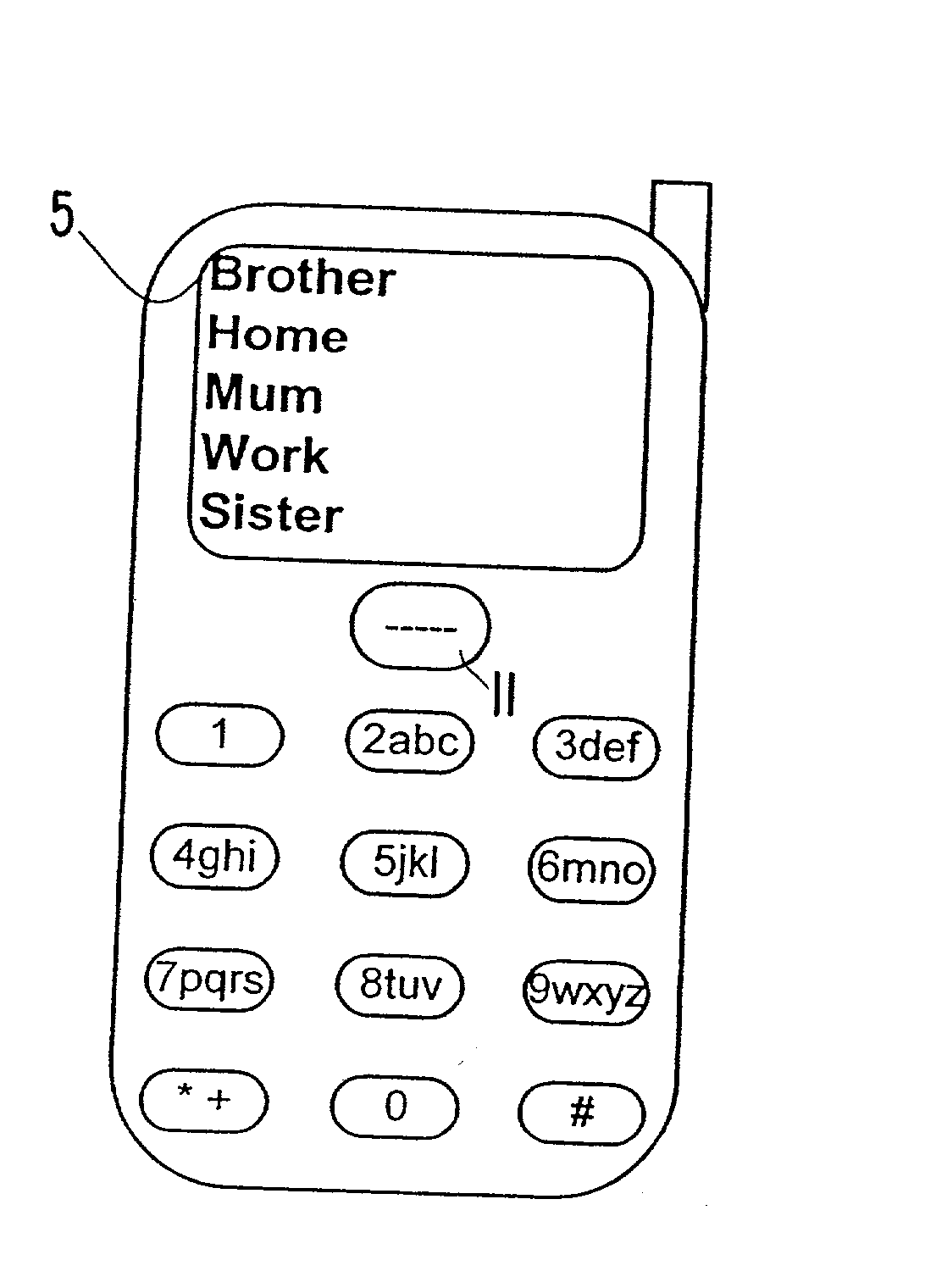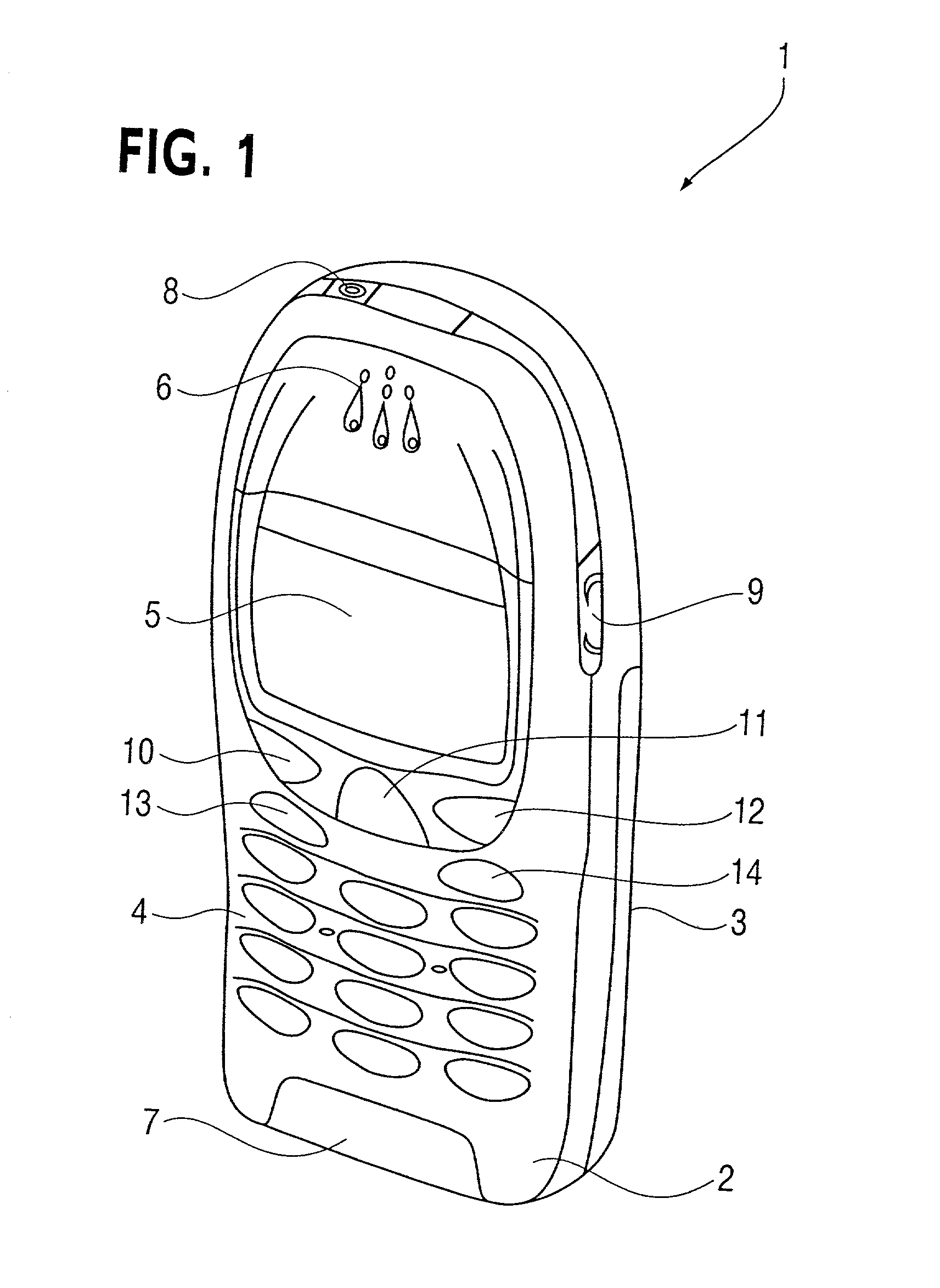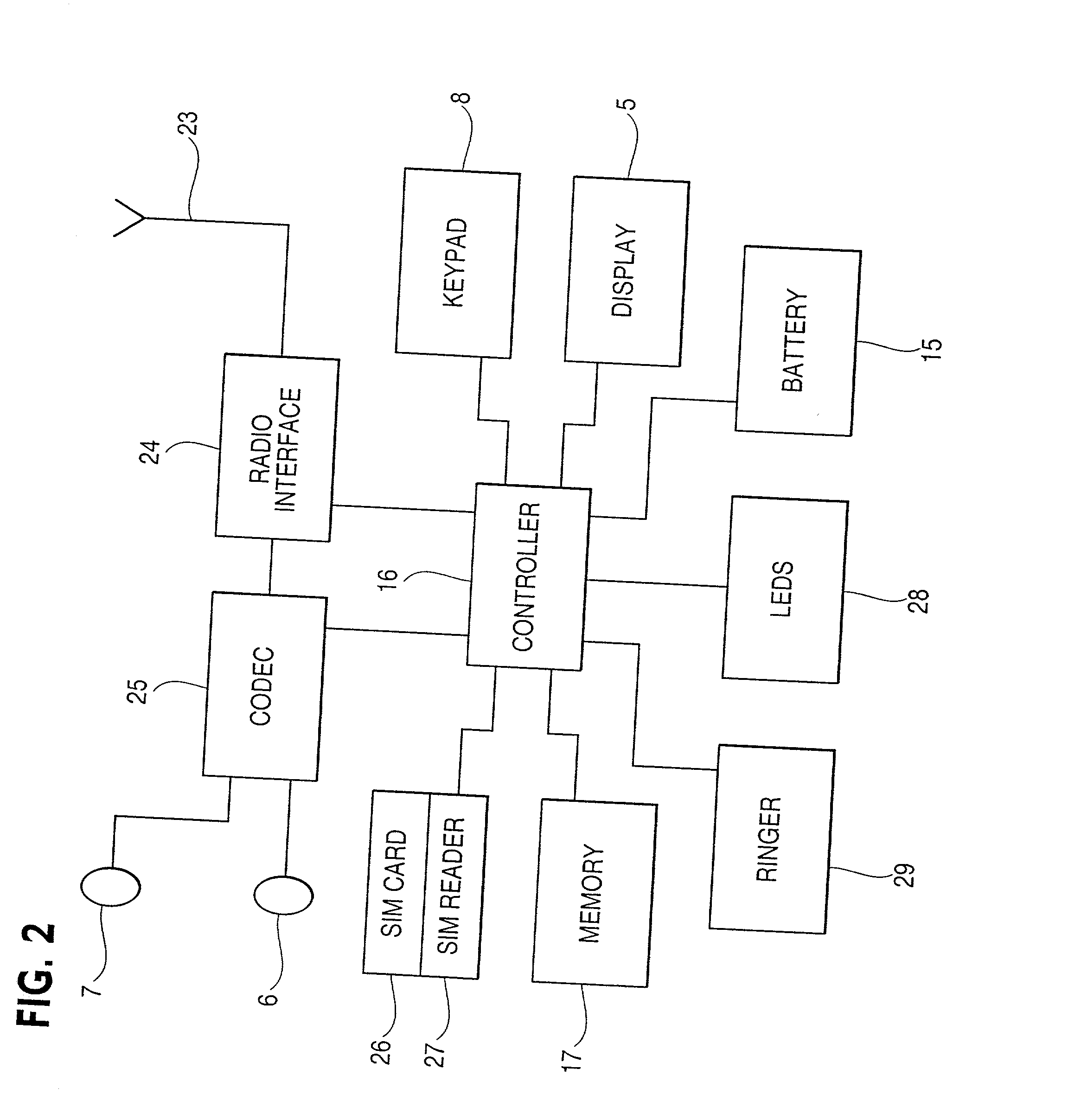Electronic device
a technology of electronic devices and telephones, applied in electrical equipment, substation equipment, wireless commuication services, etc., can solve the problems of increasing the number of mis-dialed calls, time-consuming and tiresome initiation of calls to contacts stored in the phonebook, and repeated key presses are required to loca
- Summary
- Abstract
- Description
- Claims
- Application Information
AI Technical Summary
Benefits of technology
Problems solved by technology
Method used
Image
Examples
Embodiment Construction
[0030] An embodiment of the invention will now be described, by way of example only, with reference to the accompanying drawings.
[0031] The preferred electronic device to which this invention is applicable is a mobile telephone such as that illustrated in FIG. 1 The telephone 1 has a front casing portion 2 and a rear casing portion 3. A user interface is provided in the front casing portion 2 and comprises a key pad 4, an electronic display 5, an ear-piece 6, a microphone 7, an on / off key 8 and a scroll key 9 for highlighting a particular item in a menu to enable its selection or for controlling the volume of the sound emitted through the ear-piece 6. The telephone 1 is adapted to enable communication via a wireless telecommunications network, e.g. a cellular network. However, the telephone 1 could also be designed for a cordless network.
[0032] The keypad 4 has a first group of keys that are alphanumeric to enable a user to enter a telephone number, write a text message (SMS) or ent...
PUM
 Login to View More
Login to View More Abstract
Description
Claims
Application Information
 Login to View More
Login to View More - R&D
- Intellectual Property
- Life Sciences
- Materials
- Tech Scout
- Unparalleled Data Quality
- Higher Quality Content
- 60% Fewer Hallucinations
Browse by: Latest US Patents, China's latest patents, Technical Efficacy Thesaurus, Application Domain, Technology Topic, Popular Technical Reports.
© 2025 PatSnap. All rights reserved.Legal|Privacy policy|Modern Slavery Act Transparency Statement|Sitemap|About US| Contact US: help@patsnap.com



